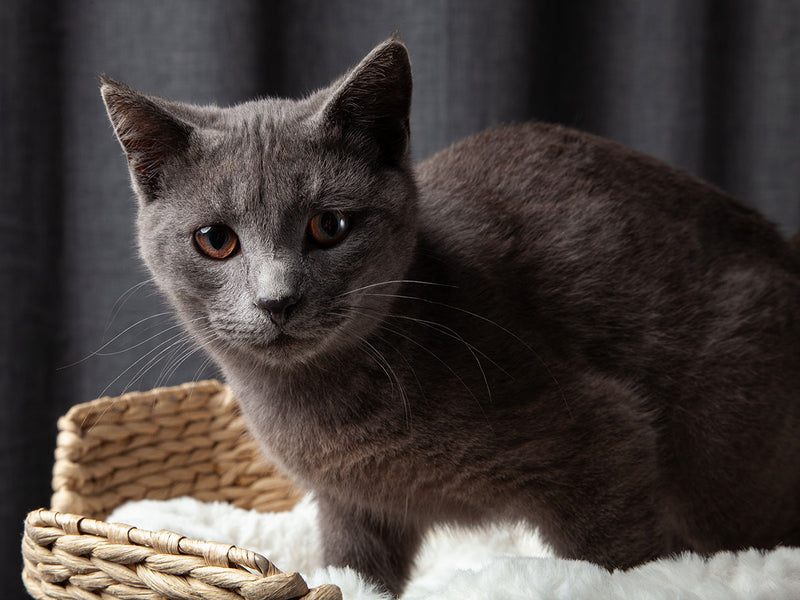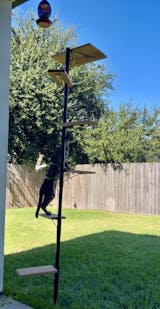Fence in general create safe environment for the cats and peace of mind for the owner.Heavy duty corner post. Because two section of fence connected 90 degrees apart to corner post, it`s imperative to have an heavy duty post.
It wasn't easy to install due to objection reason, the way the yard outline. Of course with Mat the guru assistance I accomplished to the satisfaction of my client and me. I experienced issue with the gate but managed to solve it, Thank you
It really works and our cats stay inside the garden.Glad to find this item and they shpped to Japan where there is no similar product. Very saticefied
I’m really happy with the Purrfect Perch so far. Only one of my two cats has tried it out, but she loves it. Nikita, who’s lithe and athletic, easily climbs up and enjoys lounging on the platform or perching on the steps. My bigger cat, Rudi, weighs about 18 pounds and might have a harder time with the narrow steps—I see that other customers have made modifications with larger steps, platforms...might be worth giving customers these options.
Assembly was mostly straightforward, though the holes on the platform boards didn’t line up with the bracket at first. I contacted Purrfect Fence Support on a Saturday and got a response by Tuesday letting me know they were sending replacement cedar boards. To my surprise, they arrived already attached to a new bracket—excellent customer service! The picture with the pole tied to the patio post is before securing the pole with the self drilling / tapping screws.
The perch looks great in my backyard, is very sturdy and well-made, and I can already tell the cats are going to love it so I may need another one down the road. I live in the deep south so I hope it holds up to the elements. Highly recommend!
Five years ago we got new kittens (yes, COVID kittens) but each of my 2 pairs of cats had lived for 15-20 years. We decided to enclose our backyard with the existing fence conversion because I had realized how harmful cats are to bird populations. We also were getting coyotes walking down the urban streets in the middle of the day, so keeping them in the back yard would hopefully keep them safe. The person who helped m plan my fencing system was a little leery about having a picket fence included on the system, but it has worked very well. The photo below shows how the fencing disappears and is barely visible. I was worried that it might make my back yard look like a prison! But it doesn't at all. Another benefit that I wasn't considering was that extension of the short picket fence has deterred coyotes from entering into the back yard from this side area. I still bring the cats in at night. The cats are very happy to be out in the whole back yard hunting bugs, butterfly and the occasional gopher. I'm writing this now since I had to order a couple of extra conversion brackets. I needed them to replace some brackets I had rigged up to help save on cost. This is an expensive (to me) system but hot having to take the cats to the vets after cat fights, or losing them to predators is so worth the investment. Thanks Purrfect fence!!
It was easy to assemble! my customers loved it! Great material and 100% recommended!!!!!






















